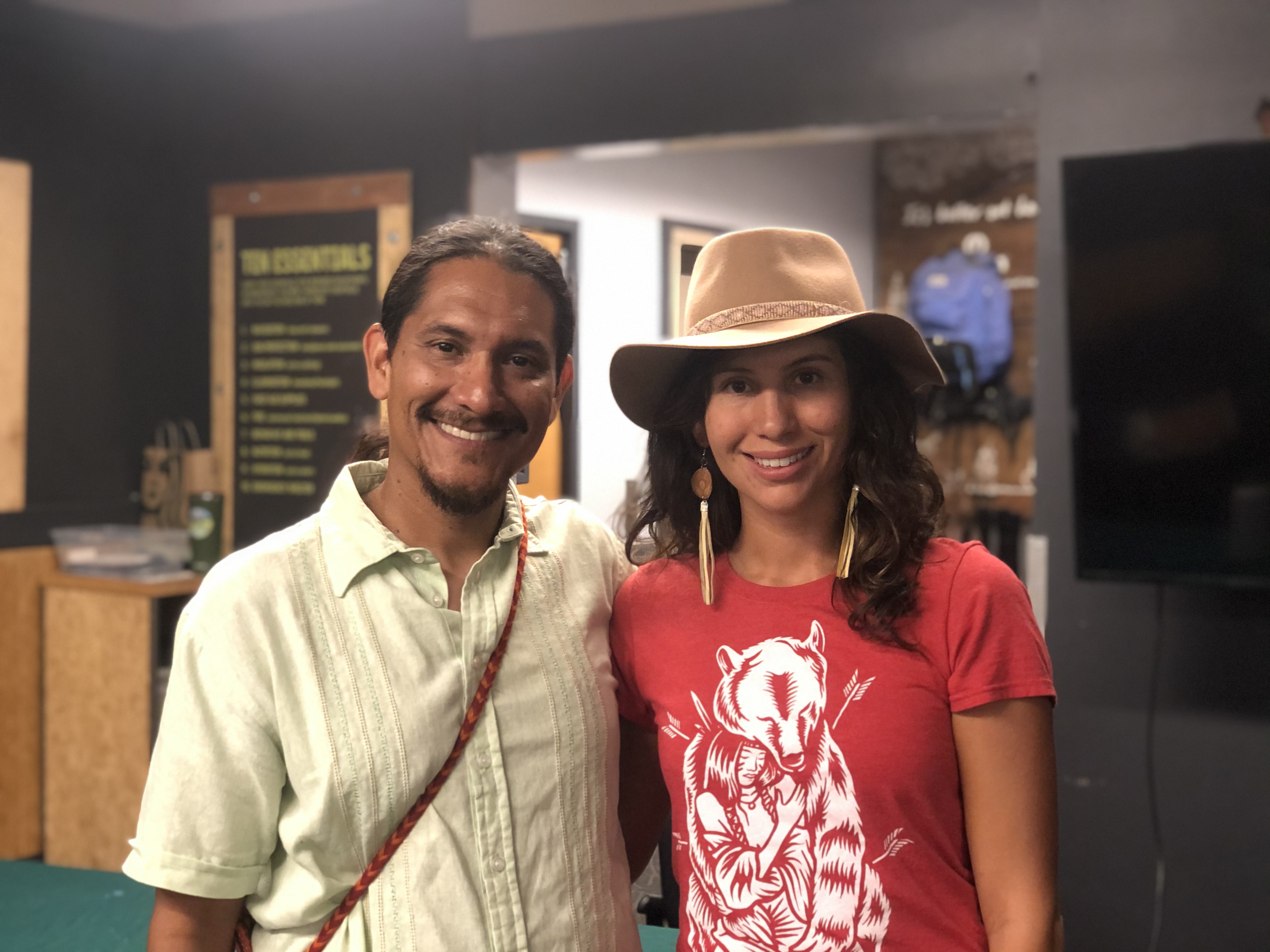All was silent as Ashleigh Thompson, a member of the Red Lake Ojibwe and a University of Arizona anthropology PhD student, spoke with passion to a room of climbers and outdoor enthusiasts about the history of the United States and the Indigenous peoples of Arizona.
At a Phoenix REI event in October, she and Sergio Avila, a wildlife biologist, conservation scientist, and local outdoors coordinator for the Sierra Club, shared insights and perspectives on the importance of acknowledging the Indigenous presence in the places we enjoy and interact with daily.
Indigenous Connection to Land
For Indigenous people, land has always been more than just a location. Not only do landmarks such as mountains define certain political boundaries, they often hold oral traditions.
Thompson explained that certain ceremonies and celebrations can only be done in specific places. Unlike Christian-based religions that can practice a sacrament like communion in different locations, some Indigenous groups go back to the same place every year to practice certain ceremonies.
West of Tucson there is a wilderness area called Baboquivari that is a popular climbing destination. It is a sacred place for the Tohono O'odham Nation. If you access the peak from the west side, you go through Tohono O'odham land. Ashleigh advised that it is in everyone’s best interest to be respectful, register yourself, and follow Tribal protocol.
She emphasized that land is important to Tribal nations even if it’s not on a reservation or designated as Tribal land. There is an Indigenous history tied to all of the ground we walk on. Indigenous communities may no longer physically be there, but there are still connections to the land and people may consider it a sacred place.

Sergio Avila and Ashleigh Thompson. Photo by David Rozul.
What can we do?
As a first step, acknowledge and inform yourself about history and Indigenous traditions. Avila spoke about the importance of having a level of awareness to work with and empower communities as a whole because together we can spark change.
“It’s not to be controversial, it’s not personal, but we have been told a story in Western culture that allows us to rationalize separating people and nature,” Avila said. “We can think that because we pay taxes we get to enjoy these parks and areas, but we must remember that we are on stolen lands.”
He talked about how although famous historical figures like John Muir and Edward Abbey had done great things to protect nature and encourage conservation, their visions were very narrow. He mentioned John Muir specifically had said tremendously offensive things about Native people and called for the separation of what Muir described as “dirty, dark-eyed, dark-haired” people from nature and an otherwise “clean wilderness.”
“We need to work with Indigenous groups, not separate them from our own conservation motives. Only when we work together can we achieve true social justice and empower communities to lead that fight to save the places we love,” Avila said.
Avila mentioned that there are many apps and online resources that can help broaden our education about Tribal lands and people. One of his favorites is a free mobile app called Native-land ( that enables a person to use their phone’s GPS to see which Indigenous group or groups are native to the location they are currently in.
Following the presentation, everyone stayed to share their own perspectives and stories. Palpable energy was present in the room and everyone left motivated and informed. As Avila mentioned earlier in the night, making a difference can start now and starts with our individual choices.
Here are seven tips from Ashleigh Thompson, a member of the Red Lake Ojibwe, on how to climb respectfully from an Indigenous perspective:
-
Do your research and your due diligence before you climb in an area. Look into the Tribal protocols for what you want to climb and check whether it's off-limits.
-
Know whose land you’re on and make space to share it with the community.
-
Think twice before using Indigenous-themed names, jokes, and comments. Welcoming Indigenous people into the climbing community starts with respecting one another.
-
Practice good stewardship. A lot of Indigenous people care deeply about the land so doing things such as cleaning up at the crag or joining in on a volunteer day for trail maintenance is a great way to show you care.
-
Support Indigenous activism.
-
Hire Native guides and buy from Indigenous people when traveling through Indigenous lands.
-
Make space for Indigenous people. If you have a chance, make space to host an Indigenous presenter and support Indigenous youth.